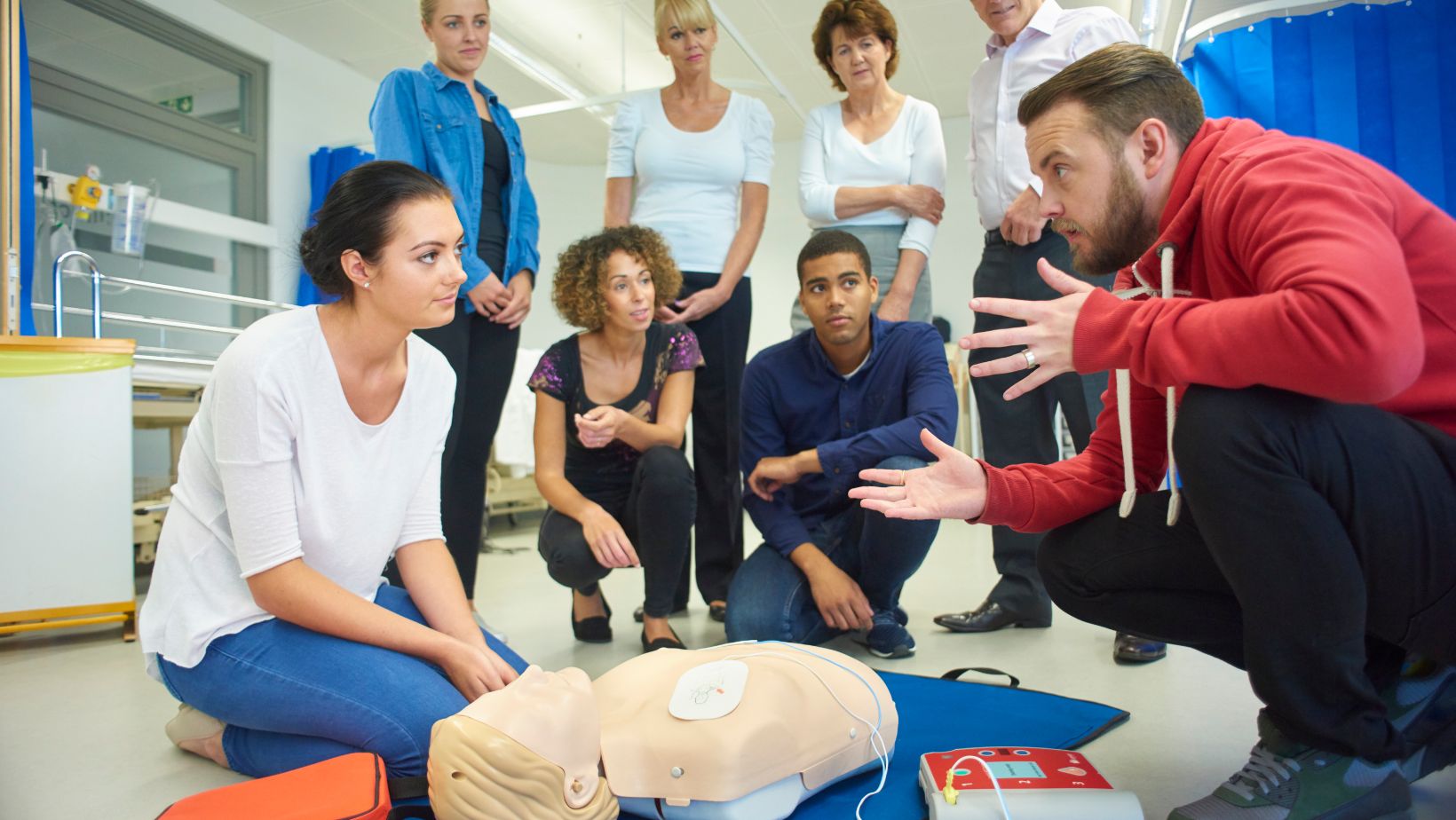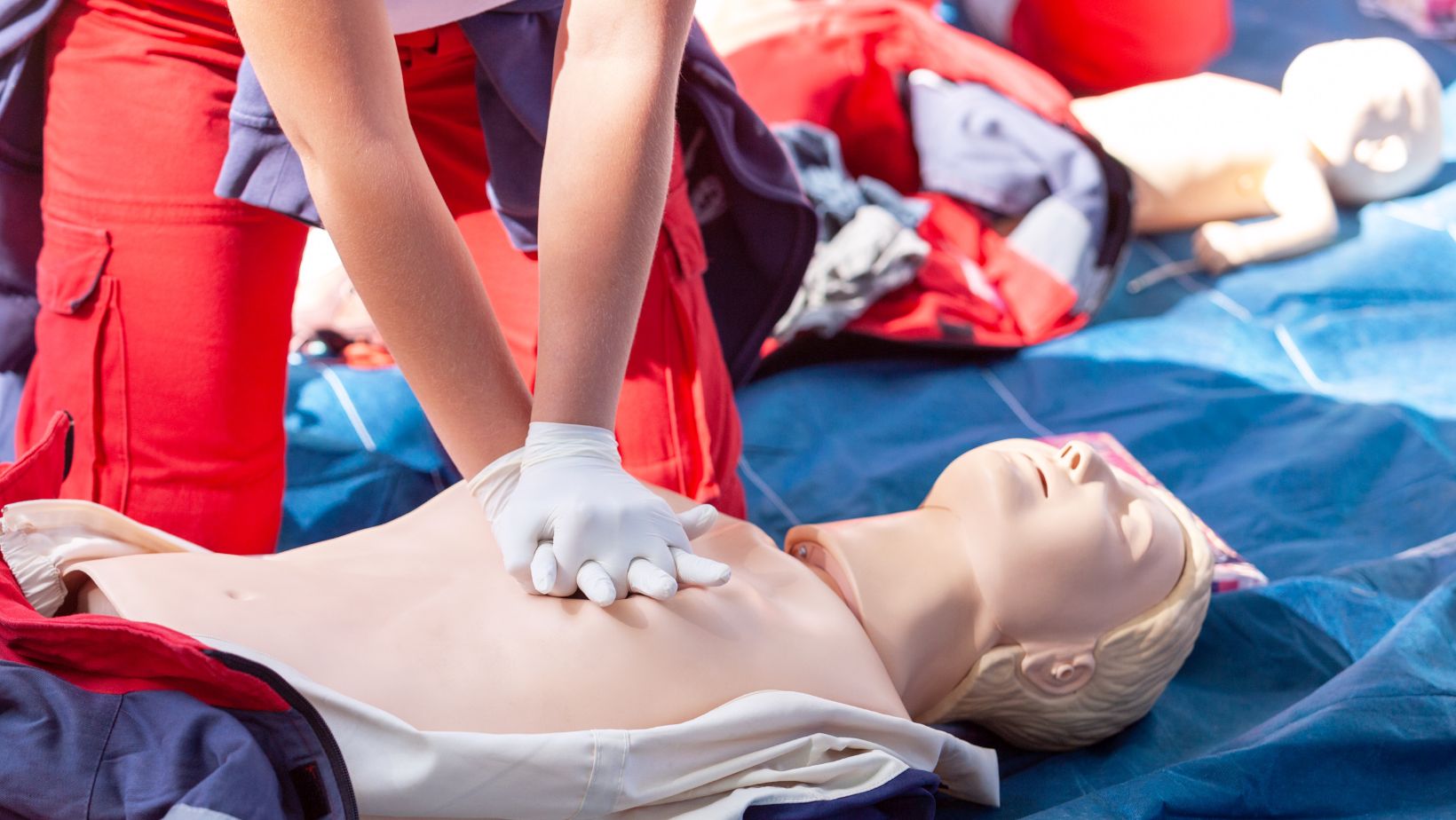
You’re booking a first aid class for yourself, and then realize, your partner should probably take it too. Maybe your teen could benefit. Maybe your whole team at work. Suddenly, what started as a solo decision feels like something everyone should be doing together.
But here’s the catch: most first aid classes are built for individuals. Coordinating schedules, payments, or access for more than one person gets complicated fast.
That’s why online first aid classes with family and group enrollment options make so much sense. You can sign up together, learn at your own pace, and make sure everyone, from your home or your workplace, knows how to act in a real emergency.
Why Choose Online First Aid for Your Family or Group?
When something goes wrong, the first person to help is usually someone nearby. That could be you, a friend, a family member, or a coworker, not a doctor. So, learning first aid together as a group isn’t just smart. It helps everyone stay ready when it matters.
Group online first aid classes make sure everyone knows the same steps. If someone falls, starts choking, or has an asthma attack, you won’t waste time figuring out what to do. You’ll already have a plan. And because it’s online, you can skip the hassle of travel and work around everyone’s schedules.
Learning as a group does more than give you certificates. It builds real teamwork. You get to practice together, ask each other questions, and handle real situations in the places you spend time, like your home, school, or workplace.
Key Features of Family & Group First Aid Enrollment
Taking a first aid course together as a family or group does more than save time. It helps everyone learn better, stay consistent, and feel more prepared. Whether you’re looking after aging parents or just want your household to be ready for emergencies, group enrollment gives you a clear edge. Here’s how:
1. Save Money as a Group
Group sign-ups usually come with a lower price per person. If you’re part of a large family or caregiving unit, this can help keep costs down while still giving you access to proper training. It’s a smart choice when you’re trying to balance safety and budget.
2. Training That Fits Your Schedule
Finding time that works for everyone is hard, especially when you’re juggling work and caregiving. Group enrollment usually offers flexible timing, like weekends or evening slots, so you can choose what fits your routine best.
3. Custom Training for Your Needs
When you train as a group, you can adjust the course to match what matters most to you. For example, if you’re caring for older adults, the instructor can focus more on stroke signs, falls, or adult CPR. That way, you learn skills you’re more likely to use.
4. Learn Better with People You Know
It’s easier to speak up, ask questions, and practice when you’re around people you trust. That comfort leads to better learning. You also get to work as a team, which helps if you ever need to use these skills in a real emergency.
5. Stay in Sync During Emergencies
If everyone in the group gets the same online first aid classes, you all follow the same steps during an actual crisis. This reduces confusion and panic. It also means faster, more coordinated action when it counts most.
6. Built-In Support Keeps You Going
People follow through on training when they do it with others. A shared goal keeps motivation high. And when one person starts slacking, the group helps keep things on track. That way, no one falls behind, and everyone stays ready.
Steps and Logistics for Group Bookings
If you’re arranging a group First Aid or ACLS course, the process doesn’t have to be confusing. Whether you’re booking for your family, workplace, or a care facility, there’s a simple way to get it done.
Just follow these steps to make sure everyone gets registered and certified on time:
1. Pick a Training Provider That Meets Standards
Start by choosing a provider that’s accredited and follows AHA or similar guidelines. Make sure they allow group bookings, offer excellent learning ( preferably online), and issue certificates that are accepted by employers and licensing bodies.
2. Know Your Group Size and What Each Person Needs
Figure out how many people are enrolling and what type of training each person needs. Some might need ACLS, others just CPR or basic First Aid. When you sort this out early, the provider can assign the right instructors and plan the schedule better.
3. Register Everyone in One Go
Usually, one person can register the full group. You’ll be asked to give names, contact details, and sometimes job credentials (especially for ACLS). Some providers also give you a dashboard to track progress and course completion.
4. Book the Hands-On Sessions
If it’s a blended course, each person has to do a skills test after the online part. Work with the provider to schedule a time that fits the group. You can choose to go to a training center, or the provider might come to your location. If the group is large, they may split it into smaller sessions.
5. Get and Share the Certificates
Once everyone finishes the course and passes the test, they’ll get their certificates. These may be digital or printed, and will show the course type, date of completion, and how long it’s valid (usually 2 years for ACLS). As the organizer, make sure everyone receives their copy and saves it in the right place.
Make Safety a Shared Responsibility
Learning first aid together as a group, whether with your family, co-workers, or caregiving team, makes things easier and more practical. You save money, stay on the same page, and build confidence as a team. Group enrollment also helps with follow-through. You’re more likely to complete the online first aid classes when others are doing it with you.
Most courses now offer flexible schedules, and some even let you tailor the content to your needs. So you’re not just ticking a box, you’re learning something that could save a life. Pick an accredited provider that offers flexible, online-first courses. Get your group trained. What they know could change the outcome when it matters most.

